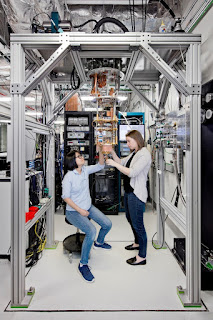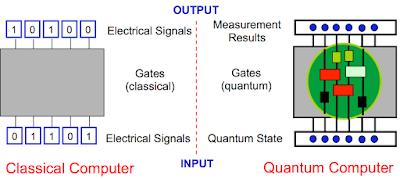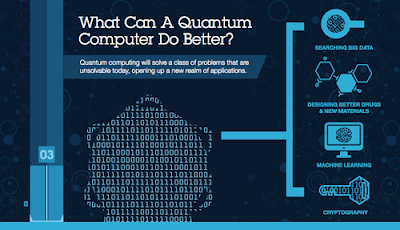Twitter Feed
Getting Your Network in the Cloud
Join us with Virtual Newsmakers on Saturday, May 28th at 11:00am for a YouTube Livestream on cloud computing. Virtual Newsmakers is a webcast show featuring virtual newsmakers, who are bridging…
Enterprise Networking in a Cloud World
Enterprises must rethink network management in the cloud computing world. This new reality is driven by the rise of software defined networking, the virtualization of everything and a business imperative…
The Game of Clouds 2016
In the mythical, medieval land of AWS, a civil war brews between the several noble Cloud Services over rulership. Meanwhile, across the sea, the former controlling dynasty, Traditional IT, attempts…
10 Ways to Flash Forward
Not to long ago I was honored to be included as a storage expert in the Dell ebook, “10 Ways to Flash Forward: Future-Ready Storage Insights from the Experts.” This…
The Future of Storage
A few weeks ago I had the pleasure of doing a Blab on advanced storage with Daniel Newman and Eric Vanderburg. We covered some pretty interesting points on enterprise storage…
DevOps and Hybrid Infrastructure Synergy
(This post first appeared in IBM’s Point B and Beyond) The definition of DevOps emphasizes collaboration and communication between software developers and other IT professionals while automating the software delivery…
Are electronic medical records worth it?
The use of Electronic Medical Records (EMR) by medical professionals has increased dramatically. According to HealthIT.gov, 2015 statistics show that 56 percent of all U.S. office-based physicians (MD/DO) have demonstrated meaningful use…
Finding a Framework for Hybrid Cloud Risk Management
(Sponsored by IBM. Originally published on Point B and Beyond) Hybrid cloud is rapidly becoming essential to today’s information technology processes. This is why hybrid cloud risk management has become…
Cancer, cloud and privacy shield
(Originally published in Dell PowerMore) For more than 10 years, the rapid rise of cloud computing has enabled an even more rapid application of cloud to genomic medicine. In fact,…
Hybrid Cloud Versus Hybrid IT: What’s the Hype?
(Originally posted on Point B and Beyond) Once again, the boardroom is in a bitter battle over what edict its members will now levy on their hapless IT organization. On…
- The release of a new API (Application Program Interface) for the IBM Quantum Experience that enables developers and programmers to begin building interfaces between its existing five quantum bit (qubit) cloud-based quantum computer and classical computers, without needing a deep background in quantum physics.
- The release of an upgraded simulator on the IBM Quantum Experience that can model circuits with up to 20 qubits. In the first half of 2017, IBM plans to release a full SDK (Software Development Kit) on the IBM Quantum Experience for users to build simple quantum applications and software programs.
The IBM Quantum Experience enables anyone to connect to IBM’s quantum processor via the IBM Cloud, to run algorithms and experiments, work with the individual quantum bits, and explore tutorials and simulations around what might be possible with quantum computing. Since its launch less than a year ago, about 40,000 users have run over 275,000 experiments on the IBM Quantum Experience. It has become an enablement tool for scientists in over 100 countries and, to date, 15 third-party research papers have been posted to arXiv with five published in leading journals based on experiments run on the Quantum Experience.
 The broad availability of quantum computing capability could prove to be a significant blow to current data encryption practices. In 2015 the US National Security Agency actually advised US agencies and businesses to prepare for a time when the cryptography protecting virtually all e-mail, medical and financial records, and online transactions would be rendered obsolete by quantum computing. The US National Institute for Standards and Technology (NIST) is also running a competition to spur work on post-quantum algorithms.
The broad availability of quantum computing capability could prove to be a significant blow to current data encryption practices. In 2015 the US National Security Agency actually advised US agencies and businesses to prepare for a time when the cryptography protecting virtually all e-mail, medical and financial records, and online transactions would be rendered obsolete by quantum computing. The US National Institute for Standards and Technology (NIST) is also running a competition to spur work on post-quantum algorithms. - Drug and Materials Discovery: Untangling the complexity of molecular and chemical interactions leading to the discovery of new medicines and materials;
- Supply Chain & Logistics: Finding the optimal path across global systems of systems for ultra-efficient logistics and supply chains, such as optimizing fleet operations for deliveries during the holiday season;
- Financial Services: Finding new ways to model financial data and isolating key global risk factors to make better investments;
- Artificial Intelligence: Making facets of artificial intelligence such as machine learning much more powerful when data sets can be too big such as searching images or video; or
- Cloud Security: Making cloud computing more secure by using the laws of quantum physics to enhance private data safety.
This content is being syndicated through multiple channels. The opinions expressed are solely those of the author and do not represent the views of GovCloud Network, GovCloud Network Partners or any other corporation or organization.
( Thank you. If you enjoyed this article, get free updates by email or RSS – © Copyright Kevin L. Jackson 2017)
Cloud Computing
- CPUcoin Expands CPU/GPU Power Sharing with Cudo Ventures Enterprise Network Partnership
- CPUcoin Expands CPU/GPU Power Sharing with Cudo Ventures Enterprise Network Partnership
- Route1 Announces Q2 2019 Financial Results
- CPUcoin Expands CPU/GPU Power Sharing with Cudo Ventures Enterprise Network Partnership
- ChannelAdvisor to Present at the D.A. Davidson 18th Annual Technology Conference
Cybersecurity
- Route1 Announces Q2 2019 Financial Results
- FIRST US BANCSHARES, INC. DECLARES CASH DIVIDEND
- Business Continuity Management Planning Solution Market is Expected to Grow ~ US$ 1.6 Bn by the end of 2029 - PMR
- Atos delivers Quantum-Learning-as-a-Service to Xofia to enable artificial intelligence solutions
- New Ares IoT Botnet discovered on Android OS based Set-Top Boxes




